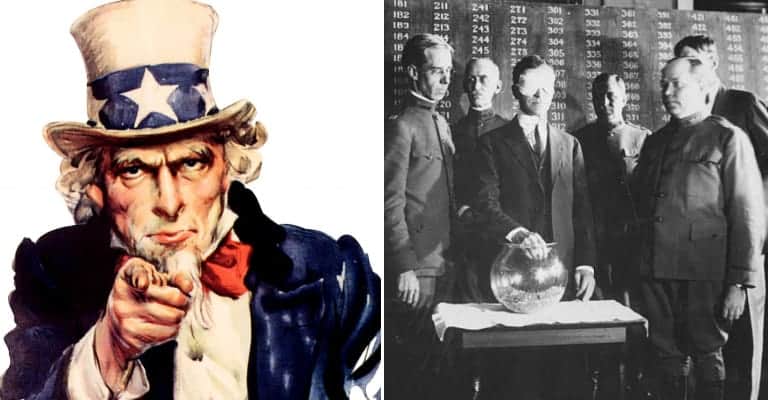Military conscription in the United States preceded the creation of the nation of that name, practiced by colonial militias, and at the community level along the western frontiers, and on New England and New York’s borders with French Canada. Colonists in North America were also subject to the British practice of manning its warships by the forced impressment of seamen and landsmen into service with the Royal Navy. Nearly all frontier communities required all able-bodied men to report for militia service and training exercises, which often coincided with Sunday church services and degenerated into more of a social event than a military exercise.

During the American Revolutionary War the practice of calling up the militia to support the operations of the Continental Army was common, though it caused military difficulties. The men of a militia unit from Pennsylvania often resented having to take orders from an officer from New York, for example, and preferred to follow their own officers, who were often elected to their posts. Still, America’s first attempts to establish a military draft began during the Revolution and an attempt to create a draft has been made, with differing degrees of success, in most of America’s wars up to the creation of the All-Volunteer Military in the 1970s.
Here are 20 events of America’s long history of conscription.
1. The Congress of the Confederation lacked the authority to draft troops

During the 1777 Saratoga Campaign the New England and New York militia units which swelled the ranks of the American Army performed well for the most part, and an encouraged Congress moved to have each state provide militia units to the Continental Army for a one year period of service. Although Washington agreed with the idea in principle, he preferred a service of at least three years, to avoid the annual event of watching his army dissolve as enlistments expired which plagued him during the first three years of the war. Congress did not have the authority to draft troops; all it could do was ask the states to support the plan by delivering militia units.
Some states complied. Others did not. The states where the frontiers were threatened by the Indian allies of the British preferred to keep their militias at home, under their control. In the south, Loyalist militia units roamed to the point that the Carolinas and Georgia were in some areas involved in a de facto civil war. All the federal government could do, under their limited powers, was authorize the impressment of seaman for the Continental Navy, greatly resented by those sailors who preferred to go to sea in privateer ships, which offered the possibility of wealth and considerably less discipline than the fledgling Navy.

